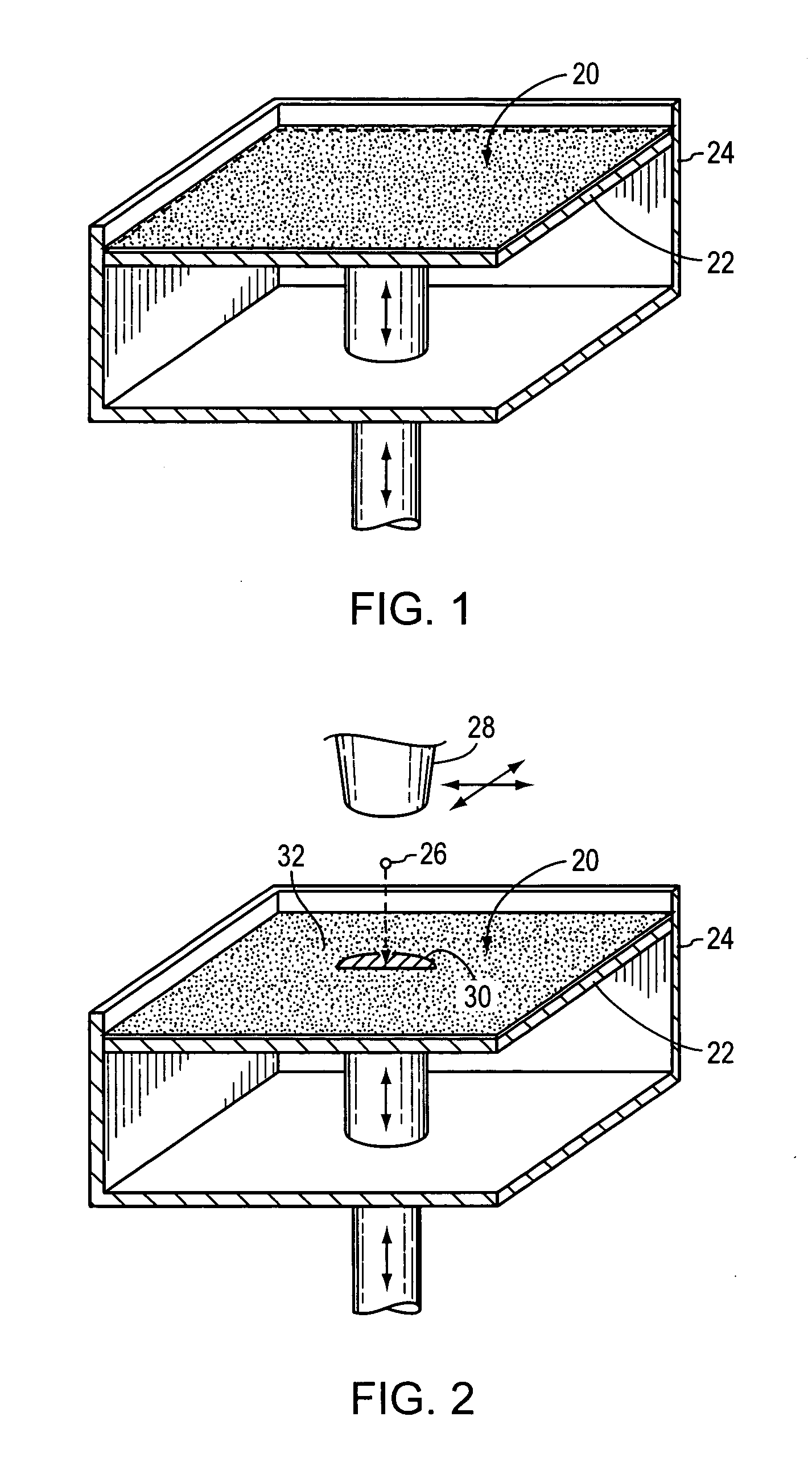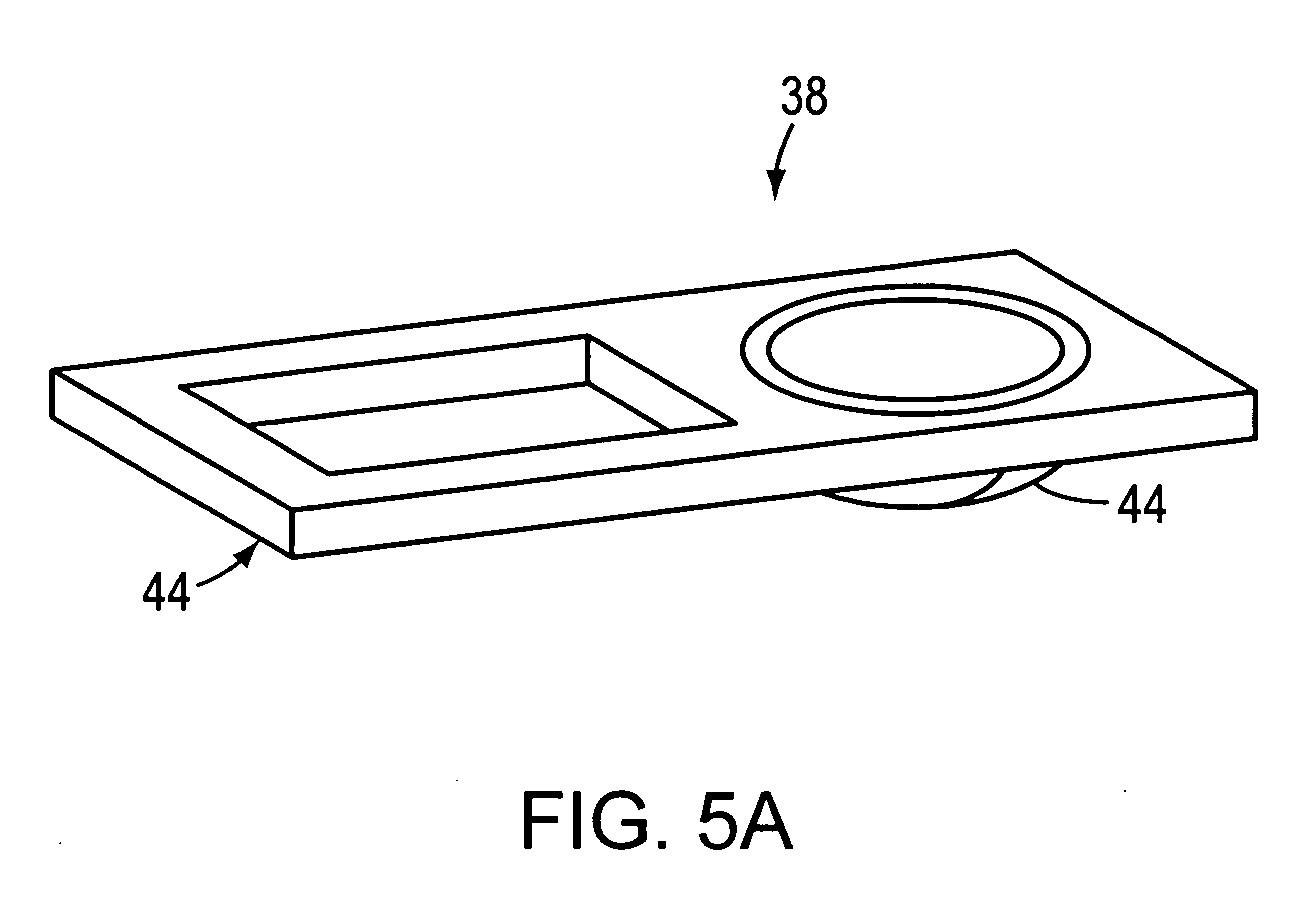Absorbent fillers for three-dimensional printing
a filler and three-dimensional printing technology, applied in the direction of additive manufacturing process, additive manufacturing with solid and fluid, non-macromolecular adhesive additives, etc., can solve the problems of less expensive liquid binder printing equipment than laser equipment, undesirable use in office environments, and more expense incurred in complying with regulations for the disposal of toxic materials. , the effect of fast, reliable, safe and inexpensiv
- Summary
- Abstract
- Description
- Claims
- Application Information
AI Technical Summary
Benefits of technology
Problems solved by technology
Method used
Image
Examples
Embodiment Construction
The present invention relates to a three-dimensional printing material system including a mixture of particles of absorbent filler material and a reactive filler, an adhesive, and / or a salt and a fluid to bind the absorbent particulate filler material to form an essentially solid porous article capable of absorbing an infiltrant. The present invention also relates to a method of use for such a materials system, and to an article made by the method of the invention. The article of the invention may be formed with excellent accuracy and an exceptional surface finish. A support structure may be formed in conjunction and simultaneously with the article, to provide physical support to the article during fabrication. As used herein, “intermediate article” is meant to define a product of a three-dimensional printing process before infiltration by an infiltrant. “Infiltrated article” is meant to define the product of a three-dimensional printing process after infiltration by an infiltrant....
PUM
| Property | Measurement | Unit |
|---|---|---|
| Fraction | aaaaa | aaaaa |
| Fraction | aaaaa | aaaaa |
| Mass | aaaaa | aaaaa |
Abstract
Description
Claims
Application Information
 Login to View More
Login to View More - R&D
- Intellectual Property
- Life Sciences
- Materials
- Tech Scout
- Unparalleled Data Quality
- Higher Quality Content
- 60% Fewer Hallucinations
Browse by: Latest US Patents, China's latest patents, Technical Efficacy Thesaurus, Application Domain, Technology Topic, Popular Technical Reports.
© 2025 PatSnap. All rights reserved.Legal|Privacy policy|Modern Slavery Act Transparency Statement|Sitemap|About US| Contact US: help@patsnap.com



